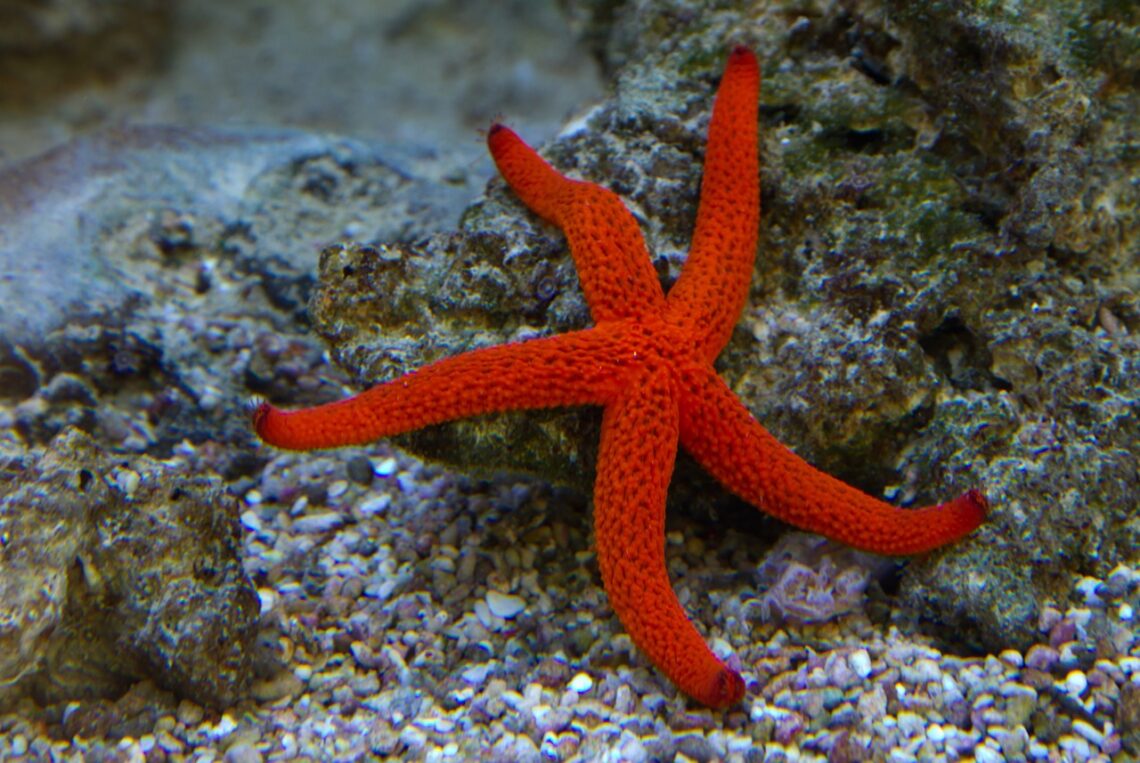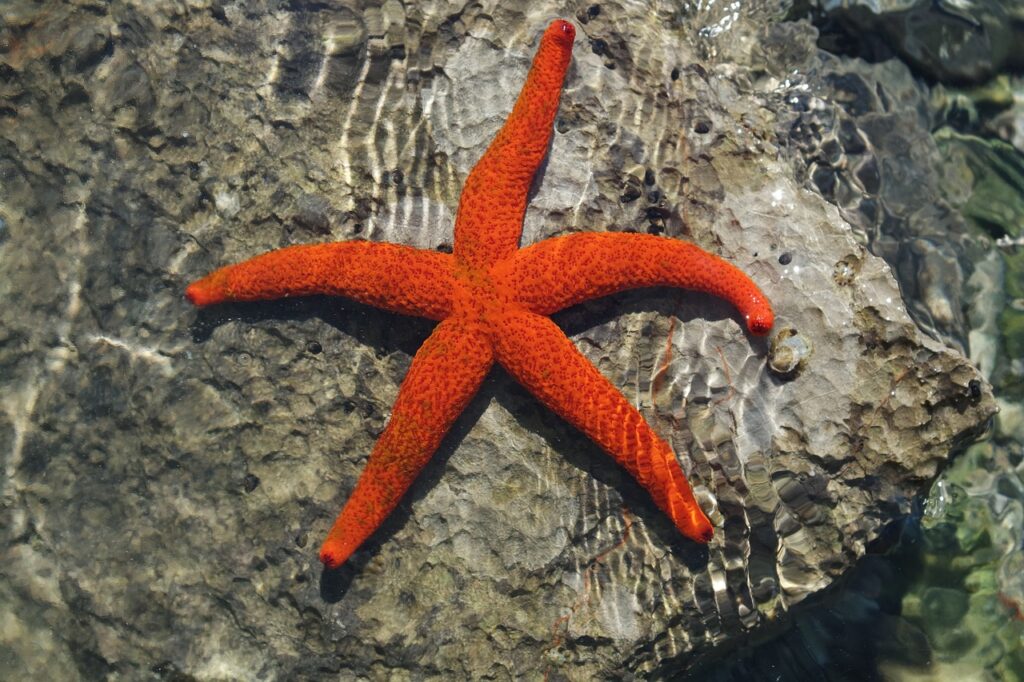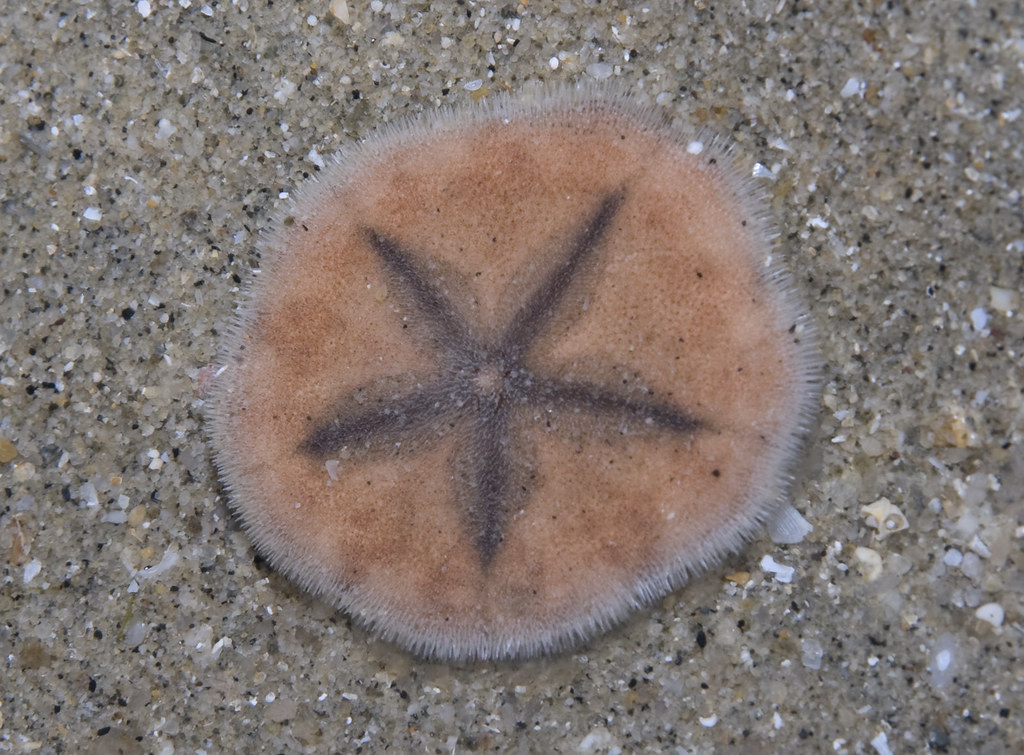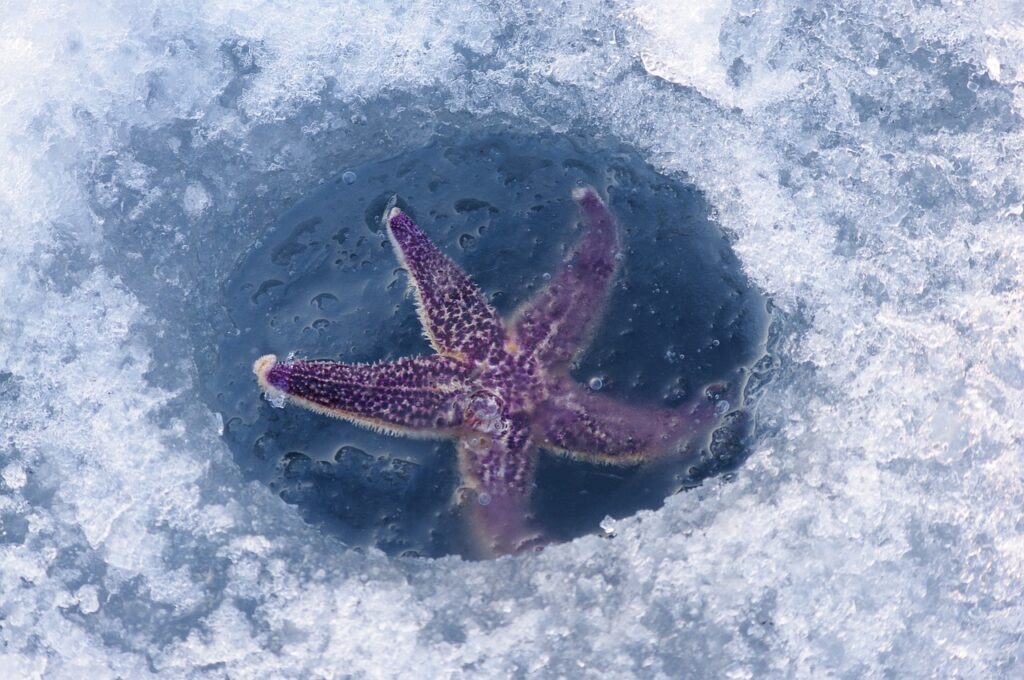
Genuine Plus Awesome Fun Facts About Starfish (The Best 20)
Unveiling Interesting Facts about Starfish
The ocean, with its vast expanse and mystery, has always captured human fascination. Among its numerous marvels, starfishes — or sea stars — stand out as one of the most captivating marine creatures. Their radiant colors, unusual body structure, and interesting behaviors make them a subject of intrigue. As you journey through this article, you’ll unveil various interesting facts about starfish that will amaze and educate you.
The World Beyond Fins and Scales
Starfishes: Not True Fish?
Contrary to their name, starfishes aren’t actually fish. Unlike manta rays or other sea animals, they fall under the category of marine invertebrates, more specifically, the phylum echinodermata. This means they don’t have a backbone.
Fun facts about starfish: Sand dollars and sea urchins are their close relatives!
Radial Symmetry and the Magic of Five
Starfishes are known for their five-armed appearance, although there are exceptions like the 40-armed sun star. Also a characteristic feature of starfishes is their radial symmetry. Consequently this means that their body parts radiate out from a central disc, almost like the spokes of a wheel.
Vital Organs and Unique Anatomy

Vascular System: Pumping Filtered Sea Water
One of the most interesting facts about starfishes is their vascular system. Instead of blood, starfishes pump filtered seawater through their system. This liquid helps in movement, waste removal, and even respiration.
Seeing Without Eyes? The Eye Spot Mystery
While starfishes don’t have developed eyes like many other sea creatures, they possess an “eye spot” at the end of each arm. These tiny red spots help them sense light and darkness, ensuring they can find their way across the ocean floor.
Where Do Starfishes Reside?
Coral Reefs to Kelp Forests
Starfishes are versatile when it comes to their habitat. They can be found in various places, from the beautiful coral reefs in tropical areas to kelp beds and kelp forests. These creatures also thrive on rocky shores, tidal pools, and even in the polar regions of the world.
The Fascinating World of Intertidal Zone
Many starfish species prefer the intertidal zone, the area that lies between the high and low tide marks. Here, they get to feast on small fish, tiny organisms, and marine creatures that are trapped in tide pools.
Conclusion of the First Segment
With just a glimpse into the world of starfishes, it’s evident that they are more than just beautiful marine animals. In fact their complex anatomy, ability to thrive in diverse habitats, and intriguing behaviors make them stand out in the vast oceanic expanse.
As we continue to delve deeper, prepare to be further amazed by the captivating world of starfishes.
The Wonders of Starfish Behavior and Abilities

Regeneration: Growing New Starfish From Body Parts
Perhaps one of the most enthralling interesting facts about starfishes is their ability to regenerate. When a starfish loses an arm due to a predator or accident, it can grow an entirely new sea star from that single limb. This form of asexual reproduction is a testament to their adaptability and survival instincts.
Tiny Tube Feet: More Than Just for Walking
Beneath the starfish, on the underside of their arms, lie thousands of tiny tube feet. Thus, equipped with tiny suction cups, these tube feet help in movement, feeding, and even breathing. They play a crucial role in the starfish’s ability to cling to rocks or hunt for food on the ocean floor.
Diverse Types and Their Unique Traits
The Fearsome Crown-of-Thorns Starfish
The crown-of-thorns starfish stands out not just because of its striking appearance but also its diet. This species feeds on coral polyps, leading to significant damage to coral reefs, especially in the Pacific Ocean. Their name is derived from the venomous thorn-like spines covering their body.
From Chocolate Chip to Sunflower Stars
Starfishes come in an array of different species, each with its unique characteristics. The chocolate chip sea star gets its name from the brownish-black tubercles on its top that resemble chocolate chips.
On the other hand, the sunflower stars are the largest starfish, boasting up to 24 arms, and can be found in kelp forests and rocky substrates.
Starfish in the Ecosystem
Starfish and Coral Reefs: A Delicate Balance
While starfishes are vital for a healthy marine ecosystem due to their role in controlling other populations, some species, like the crown-of-thorns starfish, can harm coral reefs. These starfishes consume the coral, leading to reduced coral cover and a decline in the health of the reef.
Predators of the Starfish: Who’s on the Hunt?
Starfish might seem invincible with their regeneration capabilities, but they aren’t free from predators. Sea otters, manta rays, and even some large fish see starfish as a delicious meal. Interestingly, the brittle stars, a close relative of starfishes, can sometimes be a food source for their own starfish cousins.

FAQs Facts About Starfish: Answering Your Burning Queries
Do starfish live in freshwater?
No, starfishes are saltwater creatures and cannot survive in a freshwater environment. They predominantly inhabit oceans and seas around the world.
How long is the average lifespan of a starfish?
The lifespan varies across different species of starfish. While some can live up to 35 years, others might only have a life expectancy of a few years.
Do starfishes have a nervous system?
Yes, starfishes have a simple nervous system. They lack a centralized brain but have a nerve ring and radial nerves extending down each arm, allowing them to sense and interact with their environment.
Are there any five-armed species of sea stars that can change colors?
Starfishes exhibit a variety of colors, but typically, they don’t change colors like chameleons. Their vibrant hues are often permanent and act as camouflage or warnings for predators.
Wrapping Up the Second Segment
The enchanting realm of starfish continues to be a source of wonder and fascination. Their resilience, diversity, and impact on marine ecosystems make them not just beautiful to behold but also vital for the balance of marine life.
Starfish Anatomy and Physiology: Beyond the Surface

Endoskeleton and Spiny Skin
At a glance, starfishes might appear soft, but they possess an endoskeleton made up of calcium carbonate plates, giving them their unique texture.
Embedded in this endoskeleton are tiny spines, which sometimes give starfish their characteristic rough feel. These spines, apart from being a protective measure against predators, also serve a respiratory function.
The Intricacies of the Circulatory System
Unlike many marine creatures, starfish don’t have blood. Instead, they rely on their unique water vascular system, which uses seawater to circulate nutrients and oxygen throughout their body. This system also powers their multitude of tube feet, allowing them to move and interact with their environment.
Adapting and Thriving: Starfish Habitats and Behavior
Social Creatures or Lone Wanderers?
While some starfish species lead solitary lives, many thrive in large groups, especially when food is abundant. These aggregations are a spectacular sight, with hundreds, sometimes thousands, of starfish converging in specific regions, especially during feeding frenzies.
Starfish and Their Diet
Starfishes are voracious eaters, and their diet varies based on their species and habitat. In fact their favorite meals include small fish, coral, tiny organisms, and even decomposed matter. Using their tiny tube feet, they can pry open an animal’s shell and ingest it.
One of the fascinating facts about starfishes is their ability to expel their stomachs out of their bodies to engulf and digest food, pulling the digested matter back into their body when they’re done.
The Role of Starfish in Folklore and Culture
Throughout the ages, starfish have been a symbol of mystery, magic, and healing in various cultures. From ancient mariners to indigenous tribes, starfishes have been seen as a beacon of hope, renewal, and regeneration, mirroring their natural ability to regrow limbs and even entire bodies.
Threats to Starfish and Conservation Efforts
With the beauty and mystique of starfishes comes the unfortunate reality of the threats they face. Many starfish populations are at risk due to:
- Pollution: Contaminants and waste in the oceans can severely affect starfish health and reproduction.
- Climate Change: Rising sea temperatures and ocean acidification harm starfish populations and their habitats.
- Over-collection: Starfishes are sometimes collected for decorative purposes or souvenirs, affecting their numbers.
Conservation efforts are underway to protect these beautiful marine animals. Furthermore marine reserves, sustainable tourism practices, and awareness campaigns are some of the measures in place to ensure that the fascinating world of starfishes continues to thrive.

FAQs Facts About Starfish: Delving Deeper into the World of Starfish
What is the smallest known species of starfish?
The Patiriella parvivipara is among the tiniest starfish species, often measuring just about a centimeter across.
How do starfishes defend themselves from threats?
Apart from their spiny exterior, some starfish can also produce toxins to deter predators. Their ability to regenerate also serves as a defense mechanism, allowing them to escape after shedding an arm.
Do starfishes sleep?
Starfishes don’t sleep in the traditional sense. However, they do have periods of reduced activity, especially during unfavorable conditions or when conserving energy.
Summing Up the Third Segment
From their unique anatomy to their significance in global cultures and the pressing need for their conservation, starfishes remain one of the ocean’s most captivating inhabitants. As we sail further into our exploration, prepare to uncover even more fun facts about these marine wonders.
Exploring the Mystical Aspects of Starfish
Starfish Eyes and Vision
One of the intriguing aspects of these marine invertebrates is their vision. At the end of each arm, starfishes have an eye spot. While they don’t have clear vision like humans, these eye spots can differentiate between light and darkness. Thus this helps them navigate the ocean floor and tidal pools, seeking shelter or evading predators.
Starfish and Their Radiant Radial Symmetry
Another one of the many interesting facts about starfishes is their radial symmetry. Most starfish species typically have five arms, but some can have up to 40 arms, like the 40-armed sun star. This symmetry means they don’t have a front or back and can move in any direction without turning their bodies, an essential advantage in their marine environment.
Beyond Starfish: A Look at Their Echinoderm Relatives

Sea Urchins and Sand Dollars: Close Cousins
Both sea urchins and sand dollars share the same phylum, Echinodermata, with starfishes. Like starfishes, sea urchins boast a water vascular system, but their appearance differs significantly. They are often round and spiny. Sand dollars, on the other hand, might remind one of a flattened sea urchin. These disk-shaped creatures are often found buried in the sand in shallow waters.
The Elegance of Sea Lilies and Sea Cucumbers
Sea lilies, contrary to their name, aren’t plants but marine animals related to starfishes. Resembling plants due to their stalk and “flower” top, they anchor themselves to the sea floor. Sea cucumbers, with their soft and elongated bodies, play a vital role in recycling nutrients in the ocean’s ecosystem.
Preserving the Wonder: How You Can Help
Starfishes, with their alluring beauty and crucial role in marine ecosystems, deserve our attention and care. As stewards of the planet, here’s how you can contribute:
- Educate and Advocate: Knowledge is power. By understanding and sharing interesting facts about starfishes and their importance, we can inspire collective action.
- Sustainable Tourism: If you’re exploring tidal pools, coral reefs, or the ocean floor, tread carefully. Avoid disturbing or handling starfishes and other marine creatures.
- Support Conservation Programs: Numerous organizations focus on marine conservation. Your donations, time, or expertise can make a tangible difference.
FAQs Facts About Starfish: A Final Dive into Starfish Curiosities
Can a starfish regenerate an entirely new sea star from a portion of the star?
Yes, certain species can regenerate an entirely new sea star from just a piece of their body, especially if a part of the central disk is intact.
Are starfishes true fish?
Despite their name, starfishes aren’t true fish. They lack the gills, scales, and fins that true fish possess. They are echinoderms, closely related to sea urchins and sand dollars.
Why are some starfishes found in polar regions while others in tropical areas?
Starfish species have adapted to various environments over time. Some have evolved to survive in colder, polar regions, while others thrive in warmer, tropical waters.

Final Reflections on the Ocean’s Starry Gems
As we journey through the vast expanse of our planet’s oceans, the allure of starfish remains timeless. Their beauty, resilience, and intricate relationships within marine ecosystems remind us of the wonders beneath the waves. The next time you gaze upon these fascinating creatures, either in a tide pool or through captivating images, take a moment to appreciate the myriad interesting facts about starfish that make them truly magical.
This concludes our deep dive into the world of starfishes. I hope you found this journey as captivating as the creatures themselves. I hope that you have found this article “facts about starfish” enlightening? If so please share it for others to enjoy, thank you.





3 Comments
Pingback:
Pingback:
Pingback: